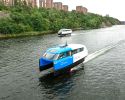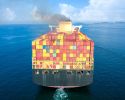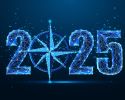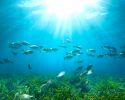HÅLL 2.0 - Demonstration of sustainable ship hull maintenance strategies
Contactperson:
Biofouling, the attachment of organisms like algae and barnacles, increases ship surface roughness, leading to higher fuel consumption, operational costs, and greenhouse gas emissions. Antifouling paints, classified into biocidal, foul release (FR), and biocide-free hard inert coatings, are used to prevent this. Biocidal coatings, mainly copper-based, release biocides affecting non-target organisms. HullMASTER, developed in the HÅLL1 project as a decision-support tool, compares operational and socio-environmental costs of different hull maintenance strategies. Specifically, the model evaluates operational costs (hull cleaning, dry docking, paint application) and social and environmental damage costs (climate change, air quality, marine eutrophication, marine ecotoxicity) based on different hull maintenance strategies. The HÅLL2 project aimed to expand HullMASTER's coverage from the Baltic Sea to European waters, include more antifouling strategies, and assess fouling growth and biocide release in various marine environments.
-
 Ny studie: Eldrivna pendelbåtar kan effektivisera Stockholms kollektivtrafik
Ny studie: Eldrivna pendelbåtar kan effektivisera Stockholms kollektivtrafik -
 EU: Sjöfartens utsläpp ökar
EU: Sjöfartens utsläpp ökar -
 Sociala relationer påverkar val av bränsle
Sociala relationer påverkar val av bränsle -
 Sjöfartens omställning kräver ”mjukare” påtryckningar
Sjöfartens omställning kräver ”mjukare” påtryckningar -
 Hon hade avtalad tid med Kapten ynkrygg
Hon hade avtalad tid med Kapten ynkrygg -
 Lighthouse omvärldsanalys 2025 – osäkerhet och tullar präglar sjöfarten
Lighthouse omvärldsanalys 2025 – osäkerhet och tullar präglar sjöfarten -
 Se seminariet Shipping in the Marine Environment
Se seminariet Shipping in the Marine Environment -
 Vad betyder egentligen de 90 procenten?
Vad betyder egentligen de 90 procenten? -
 Hålla där...
Hålla där... -
 Ny rapport: Klimatförändringarna ett hot mot de flesta större hamnar i världen
Ny rapport: Klimatförändringarna ett hot mot de flesta större hamnar i världen

